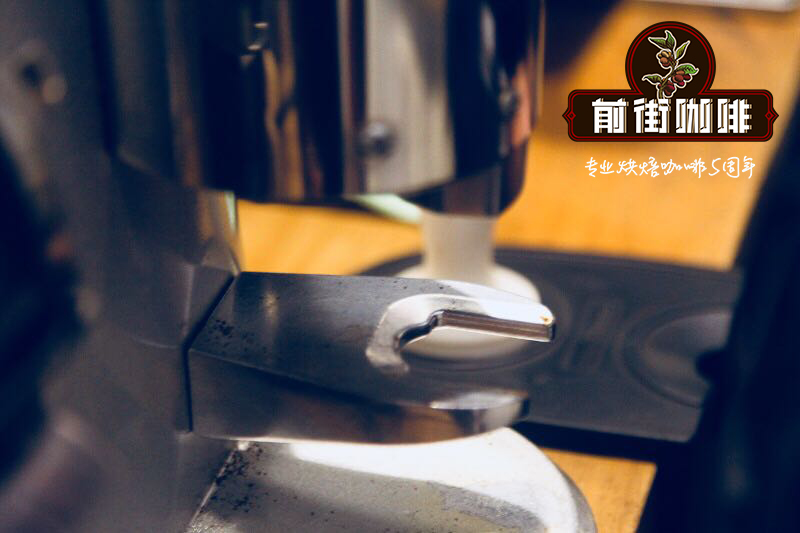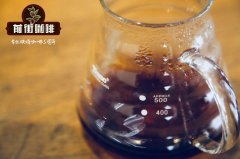What are the types of powder presses? Introduction to the principle of powder hammer?

Professional coffee knowledge exchange more coffee bean information please follow the coffee workshop (Wechat official account cafe_style)
Speaking of powder hammer / powder press, I believe baristas must be no stranger. From the original filling apparatus to today's various cloth powder dispensers and powder hammers, what is more, the ultimate goal is to make the density of coffee powder in the powder bowl uniform and reduce the channel effect during the extraction of Italian concentration (espresso), so as to achieve a more uniform extraction. Since the results of coffee extraction vary according to the shape of the powder hammer and the tamping skills of the barista, it is particularly important to choose the appropriate powder hammer and tamping methods. Today, let's take a brief look at the evolutionary history of pink hammers.
one
What was the early pink hammer like?
The first real "EspressoMachine" espresso machine in history was born in 1905. With the continuous evolution of coffee machines and bean grinders, merchants will also provide powder hammers to meet the needs of filling coffee powder, and even combine the filling device with the machine when designing the bean grinder. The author has consulted a lot of data, but there is no record of the birth of the first pink hammer.
Mazzer mini bean grinder, with powder pressing device installed on the fuselage
When it comes to individual pink hammer brands, I believe coffee players are familiar with the following two brands: Reg Barber and Pullman. Reg Barber's first pink hammer was born more than 20 years ago. Its inspiration comes from the founder Reg Barber's unpleasant experience when using a plastic powder hammer (flimsy, plastic tamper). When Reg first joined the industry in 1995, coffee powder hammers were mainly made of "plastic / aluminum" and were not comfortable to use. In order to pursue more outstanding products, Reg started his road of pink hammer, and eventually developed his own brand into a world-famous brand. Another well-known Australian brand Pullman, founded in 2002, focuses on local materials, pure handmade, high-quality steel, leather and aluminum are the main production materials, and superb craftsmanship and ever-changing customized models have also made Pullman famous in the pink hammer world.
two
An ever-changing shape
With the in-depth study of coffee extraction and considering ergonomics and other factors, the design of the base and handle of the powder hammer is gradually diversified.
1. Pedestal
Diameter: the diameter of the base matches the diameter of the powder bowl of the coffee machine handle, of which the diameter of 58mm is the most common type.
Shape: the shape of the base is derived from different radians and shapes according to the extraction effect, and most of them are still flat (flat).
A pedestal of the same shape
two。 Handle
The design of the powder hammer handle has evolved from an early single cylinder to an irregular cylinder, and even other shapes, or even no handle, including not only ergonomic improvements, but also some eye-catching creative shapes.
X-Chef stainless steel coffee powder hammer
When pressing powder, the position of the powder hammer handle is generally located in the palm, the pressure during tamping is transmitted to the thumb and index finger through the arm and palm, and the coffee powder in the powder bowl is pressed through the powder hammer base, therefore, most powder hammer handles are designed to take into account the grip strength and comfort of the palms. It is not difficult to find that the powder hammer handle has evolved from being close to the cylinder at the beginning to a shape closer to the arc of the palm (mushroom / sphere) and is widely used in the market. It is also important for baristas to find a pink hammer that is comfortable to hold.
Modern Maple 2015
What is worth mentioning here is the pink hammer Modern Maple, which he developed with his brother Tim Put in the 2015 World Barista Competition with Canada's Ben Put. Tim's inspiration for the design of pink hammer handles comes from carpenters' tools. In order to avoid long-term damage to the wrists, craftsmen often develop the most suitable tools. Therefore, according to the way the barista pressed the powder, the two brothers made this pink hammer that resembles the shape of a dolphin.
In addition to the traditional powder hammer with handle, taking into account the uniform force when pressing powder and other problems, but also derived the following two products:
1 l spring powder hammer
The invention of the spring hammer is based on the hope of applying constant pressure on the pressed powder to ensure extraction. The base is divided into two layers, the upper layer is used to hold the powder hammer on the edge of the powder bowl to keep the powder hammer level fixed, and the lower layer is used to fill pressed powder. Here are several representative spring powder hammers:
Australia EAZYTAMP 5 Star Pro
Eazytamp's concept of elastic powder hammer has been around since 2004. Founder Elie Nootenboom added a 15-kilogram spring to the powder hammer and designed a unique internal structure: the locking system. If baristas do not want to use a spring powder hammer, the powder hammer can also be converted into a fixed mode at any time, and the system has also patented it. In 2010, Eazytamp was officially put into large-scale production of the automatic production line, with 10 kg spring, 6 types of base lines and different base sizes to choose from.
In addition, the Force Powder Hammer The Force Tamper, which won the 2017 German Red Dot Award, has become the focus of a new generation with a new type of constant impact powder.
2 l powder press without handle
At the 2015 World Barista Competition, British barista Maxwell Colonna-Dashwood attracted attention with a handle-less powder press called PUSH by Clockwork Espresso's Pete Southern. The base is rotatable to adjust the height of pressed powder when pressing powder. According to the designer, this powder hammer can ensure the consistent quality of pressed powder every time the barista presses powder. At the same time, it also alleviated the damage to the barista's wrist, and at this point, the powder press without handle also began to come to the fore.
3 l automatic powder press
In view of the damage to the wrist caused by the long-term use of powder hammer, people begin to think about whether there is an automatic powder pressing device that can replace manpower. As early as 2000, La Marzocco launched a fully automatic bean grinder called "Swift", which integrates grinding, powder feeding and filling functions, among which its automatic filling design also provides a certain basis for future powder dispensers. In 2013, La Marzocco designed a new Vulcano Swift based on the Vulcano model.
The automatic powder press of the machine is located at the powder outlet of the bean grinder. During powder production, a built-in screw press bar device and a powder pressing impeller can distribute and fill the coffee powder in the powder bowl. At the same time, remove excess coffee powder.
Puq Press 2016
Another programmable automatic powder press called PUQ Press was officially unveiled at the SCAA Coffee Show in April 2016. It can provide 20-60 pounds of pressure according to the parameters set by the user in about 1 second. The powder press will press the powder twice to avoid this problem, the first gently down to distribute the powder evenly, and the second full pressure to tamp the pressed powder.
4. The birth of the powder distributor
"cloth powder" refers to the uniform distribution of coffee powder before pressing powder, in preparation for pressing powder. In the early years, most baristas used to distribute powder directly by hand. in recent years, in order to distribute powder more evenly, powder dispensers also emerged as the times require.
ONA Coffee Distributor 2015 (OCD)
In fact, in the early years, there was a similar concept of cloth powder in coffee circles in Taiwan, but it really became popular in recent years, especially in the OCD designed by Sasa Sestic, the world barista champion in 2015. In fact, as early as 2012, Sasa had his own idea of the concept of cloth powder, and finally applied it to his four-paddle cross cloth powder machine, put it on the powder bowl, and smoothed the coffee powder by rotating. The latest second-generation OCD innovates and improves the depth of the powder bowl into a 7-13mm "endless" fast adjustment system, which is more suitable for the short-term response of competitors.
In addition, Pullman also launched a two-pulp powder distributor in 2017. In order to reduce the downward pressure when the powder distributor moves sideways, the lowest area of the two oars has also been reduced.
In addition to the powder distributor that resembles the powder hammer without handle, in 2017, Twister, a brand from Taiwan, launched a vane powder distributor, which uses spiral shafts and blades to spirally distribute the powder scattered on the leaves layer by layer, resulting in a uniform distribution.
(ps. Channel effect: because water is inert, it will choose the path with the least resistance when it passes through the coffee powder. If the cloth powder is uneven, when water passes through the coffee powder, it will create a "channel" in the sparsely distributed part. )
4. Plastic powder hammer?
With all that said, the evolution of coffee cloth dispensers and powder hammers seems to be becoming more high-tech and theoretical, but a "plastic powder hammer" released by Matt Perger in 2017 seems to have pulled the high-tech powder hammer off the altar. Based on the fragile characteristics of traditional stainless steel powder hammer, Matt uses acetal material, sandblasted to make powder hammer handle, and then replaces the base with 1mm, detachable polished stainless steel, resulting in this lightweight and durable powder hammer.
It seems to have made a big circle and returned to the original point, but the back of the pink hammer design also represents people's in-depth understanding of coffee extraction. In short, the correct solution is to choose the pink hammer you are most used to.
Important Notice :
前街咖啡 FrontStreet Coffee has moved to new addredd:
FrontStreet Coffee Address: 315,Donghua East Road,GuangZhou
Tel:020 38364473
- Prev

How to choose the right beans for you? Coffee beans recommended?
Professional coffee knowledge exchange More coffee bean information Please pay attention to coffee workshop (Weixin Official Accounts cafe_style) The first move: Fresh fresh coffee bean definition will vary according to ambient temperature, humidity, packaging method and preservation method. In terms of environmental conditions in Taiwan, coffee beans stored in one-way breathable bags and placed at room temperature are considered new within two weeks after roasting.
- Next

Italian coffee culture, how does Italy drink coffee?
Professional coffee knowledge exchange more coffee bean information Please follow the coffee workshop (Wechat official account cafe_style) for many people, coffee is our daily productivity source, without a cup every day, the whole person is lifeless. According to statistics, the world drinks more than 2 billion cups of coffee every day, making it one of the most popular drinks in the world. But it doesn't matter much.
Related
- Beginners will see the "Coffee pull flower" guide!
- What is the difference between ice blog purified milk and ordinary milk coffee?
- Why is the Philippines the largest producer of crops in Liberia?
- For coffee extraction, should the fine powder be retained?
- How does extracted espresso fill pressed powder? How much strength does it take to press the powder?
- How to make jasmine cold extract coffee? Is the jasmine + latte good?
- Will this little toy really make the coffee taste better? How does Lily Drip affect coffee extraction?
- Will the action of slapping the filter cup also affect coffee extraction?
- What's the difference between powder-to-water ratio and powder-to-liquid ratio?
- What is the Ethiopian local species? What does it have to do with Heirloom native species?

